- The importance of fertilising winter garlic
- Benefits of fertilising winter garlic
- Choosing the right fertiliser
- When to fertilise winter garlic
- Choosing the right fertilizer for winter garlic
- Understanding the nutrient requirements of winter garlic
- Types of fertilizers for winter garlic
- Choosing the right fertilizer for your specific needs
- Timing is key: when to fertilise winter garlic
- Timing based on growth stages
- Timing based on soil testing
- Conclusion
- Applying fertiliser: best practices for winter garlic
- 1. Soil testing
- 2. Choose the right fertiliser
- 3. Timing
- 4. Application method
- 5. Watering and mulching
- 6. Follow recommended rates
- Dos and don’ts of fertilising winter garlic
- Conclusion
- Nutrient deficiencies in winter garlic and how to address them
- 1. Nitrogen deficiency
- 2. Phosphorus deficiency
- 3. Potassium deficiency
- 4. Calcium deficiency
- 5. Magnesium deficiency
- 6. Micronutrient deficiencies
- Organic fertilisers for winter garlic: alternatives to chemical products
- 1. Compost
- 2. Manure
- 3. Bone meal
- 4. Fish emulsion
- 5. Seaweed extract
- Regular soil testing for optimal fertilisation of winter garlic
- Why is soil testing important?
- How often should you test your soil?
- What should you test for?
- Interpreting soil test results
- Conclusion
- “Question-Answer”
- When is the best time to fertilise winter garlic?
- What type of fertilizer should I use for winter garlic?
- How much fertilizer should I use for winter garlic?
- Can I use organic fertilizer for winter garlic?
- Should I fertilise winter garlic more than once?
- Can I use liquid fertilizer for winter garlic?
- What other care tips are important for a successful harvest of winter garlic?
- “Video” 6 TIPS FOR GROWING GARLIC TO GET GARLIC THE SIZE OF AN APPLE
If you’re growing winter garlic, proper fertilisation is crucial for a successful harvest. Winter garlic requires specific nutrients to develop strong bulbs and a rich flavor. In this article, we will provide you with essential tips on how to fertilise your winter garlic effectively.
1. Choose the right fertiliser:
When it comes to fertilising winter garlic, it’s important to choose the right fertiliser. Look for a balanced fertiliser that contains the essential nutrients your garlic needs, such as nitrogen, phosphorus, and potassium. Avoid fertilisers with high nitrogen content, as they can promote excessive leaf growth at the expense of bulb development.
2. Timing is key:
Timing is crucial when fertilising winter garlic. Apply fertiliser before planting your garlic cloves, or in early spring when the shoots start to emerge. This will allow the garlic to absorb the nutrients and promote healthy growth. Avoid fertilising too late in the season, as it may lead to delayed bulb formation.
3. Apply the fertiliser evenly:
When applying fertiliser, make sure to distribute it evenly across the garlic bed. This will ensure that all the cloves receive an adequate amount of nutrients for their growth. You can use a garden fork or rake to gently work the fertiliser into the top layer of soil.
4. Don’t overdo it:
While fertilisation is important, it’s crucial not to overdo it. Excessive fertiliser can lead to burnt roots and potentially damage your winter garlic crop. Follow the instructions on the fertiliser packaging and adjust the amount according to the size of your garlic bed.
“Proper fertilisation is integral to the success of your winter garlic harvest. By choosing the right fertiliser, timing it correctly, applying it evenly, and avoiding excess, you can ensure that your garlic bulbs develop strong and flavorful.”
By following these essential tips, you’ll be well on your way to a successful winter garlic harvest. Remember, fertilisation plays a crucial role in the growth and development of winter garlic, so take the time to provide your plants with the nutrients they need for optimal results.
The importance of fertilising winter garlic
Fertilising winter garlic is essential for a successful harvest. Garlic is a nutrient-heavy plant that requires adequate amounts of key nutrients in order to grow and develop properly. Fertilising your garlic plants will not only help them grow bigger and healthier, but it will also improve the overall flavor and quality of the garlic bulbs.
Benefits of fertilising winter garlic
- Increased yield: Fertilisers provide essential nutrients to the plants, which help in increased bulb development. Proper fertilisation can significantly boost the yield of your winter garlic crop.
- Improved quality: When you fertilise winter garlic, you are providing the necessary nutrients for the plant to produce larger and better-quality bulbs. Nutrient deficiency can lead to smaller bulbs with a lower flavor profile.
- Enhanced pest and disease resistance: Fertilised garlic plants are healthier and more resistant to pests and diseases. The nutrients in the fertiliser help the plants build strong immune systems, making them less susceptible to common garlic diseases.
- Better storage: Proper fertilisation can improve the storage life of garlic bulbs. Nutrient-rich plants tend to have thicker skins and a longer shelf life.
Choosing the right fertiliser
When it comes to fertilising winter garlic, it is important to choose the right type of fertiliser. A balanced fertiliser with a ratio of nitrogen (N), phosphorus (P), and potassium (K) is ideal for garlic plants. Look for fertilisers specifically formulated for bulb crops or vegetables.
You can also consider organic fertilisers, such as compost or well-rotted manure, which provide slow-release nutrients to the plants over time. Organic fertilisers not only improve soil fertility but also promote beneficial microbial activity.
| Nutrient | Ideal Ratio |
|---|---|
| Nitrogen (N) | 1 |
| Phosphorus (P) | 2 |
| Potassium (K) | 3 |
When to fertilise winter garlic
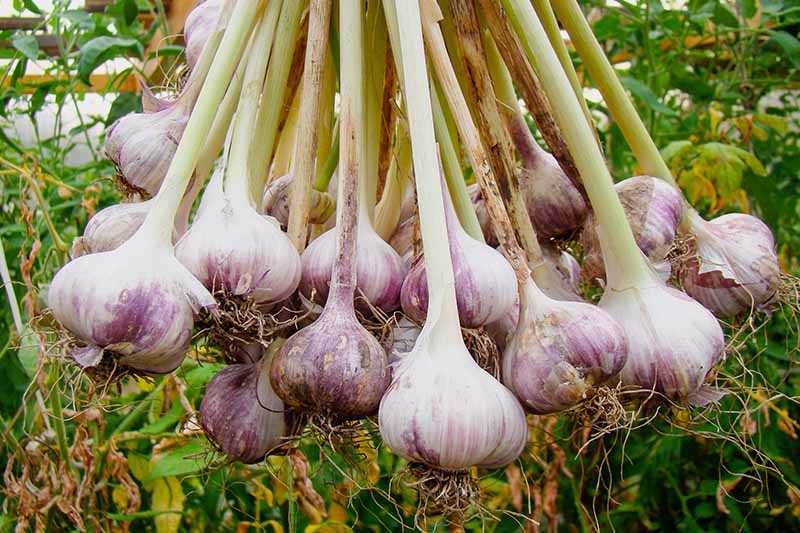
It is recommended to fertilise winter garlic at the time of planting and then again during the growing season. Here is a general timeline for fertilising winter garlic:
- Fertilise the soil before planting garlic cloves to provide a nutrient-rich environment for the bulbs to develop.
- Apply a side dressing of fertiliser halfway through the growing season, typically 4-6 weeks after planting. This will help sustain the plant’s nutrient needs as it continues to grow.
- Avoid over-fertilising as it can lead to excessive foliage growth and smaller bulb development.
By following these tips and providing your winter garlic plants with the proper nutrients, you can ensure a successful harvest with robust, flavorful bulbs.
Choosing the right fertilizer for winter garlic
In order to have a successful harvest of winter garlic, it is important to choose the right fertilizer. The right fertilizer will provide the necessary nutrients that garlic needs to grow strong and healthy throughout the winter months.
Understanding the nutrient requirements of winter garlic
Winter garlic has specific nutrient requirements that need to be fulfilled in order for it to thrive. These nutrients are essential for the optimal growth and development of the garlic plant. The main nutrients that winter garlic requires are nitrogen (N), phosphorus (P), and potassium (K).
- Nitrogen (N) is important for the overall growth and development of the garlic plant. It helps in the formation of proteins, which are essential for the growth of leaves and stems.
- Phosphorus (P) plays a crucial role in the development of roots and the overall strength of the garlic plant. It also helps in the formation of flowers and seeds.
- Potassium (K) is essential for the formation of strong and healthy bulbs. It helps in increasing the garlic’s resistance to diseases and improves overall plant vigor.
Types of fertilizers for winter garlic
There are several types of fertilizers that can be used for winter garlic. These include organic fertilizers, such as compost and well-rotted manure, as well as synthetic fertilizers, such as granular or liquid fertilizers.
- Organic fertilizers are a great choice for winter garlic as they provide slow-release nutrients and improve soil structure. Compost and well-rotted manure can be applied during the preparation of the garlic bed or as a top dressing during the growing season.
- Synthetic fertilizers can also be used for winter garlic, providing a quick source of nutrients. These fertilizers are typically high in nitrogen and can be applied as a side dressing or mixed in with the soil before planting.
Choosing the right fertilizer for your specific needs
When choosing a fertilizer for your winter garlic, it is important to consider the specific needs of your soil and garlic plants. Conduct a soil test to determine the nutrient levels and pH of your soil. This will help you choose a fertilizer that is balanced and meets the specific needs of your garlic plants.
Additionally, consider the stage of growth your garlic plants are in. Different fertilizers may be more appropriate during different stages of growth. For example, a fertilizer high in nitrogen may be beneficial during the early stages of growth to promote leaf and stem development, while a fertilizer higher in phosphorus and potassium may be more beneficial during bulb formation.
Overall, choosing the right fertilizer for winter garlic is essential for a successful harvest. Understanding the nutrient requirements and using the appropriate fertilizer will help ensure that your garlic plants grow strong, healthy, and produce high-quality bulbs.
Timing is key: when to fertilise winter garlic
Properly timing the application of fertilizer to winter garlic is crucial for a successful harvest. Fertilizing at the right time ensures that the garlic plants receive the essential nutrients they need to grow and develop, resulting in healthy and robust garlic bulbs.
Timing based on growth stages
One way to determine the ideal timing for fertilizing winter garlic is by considering the growth stages of the plants. Here are some key milestones to guide you:
- Planting stage: Winter garlic is typically planted in the fall, so it’s important to fertilize the soil before planting the cloves. This initial fertilization provides a good nutrient base for the garlic to establish itself.
- Early growth stage: Once the garlic plants start to sprout and emerge from the soil, it’s an indication that they need a boost of nutrients. This is the perfect time to apply a balanced fertilizer to support their growth.
- Bulb formation stage: As winter garlic continues to grow, it will enter a stage where it begins to form bulbs. At this point, providing the right nutrients becomes even more critical. A fertilizer high in phosphorus can help promote bulb development.
- Maturation stage: Towards the end of the growing season, when the garlic foliage starts to turn yellow and dry up, it’s important to reduce or stop fertilization. This allows the plants to focus on bulb maturation rather than vegetative growth.
Timing based on soil testing
Another approach to determine the timing for fertilizing winter garlic is by conducting a soil test. A soil test will reveal the nutrient levels and pH balance of the soil. Based on the results, you can adjust the fertilizer application to meet the specific needs of your garlic crop.
Conclusion
Fertilizing winter garlic at the right time is essential for ensuring a successful harvest. Whether you base the timing on growth stages or soil testing, providing the right nutrients at each stage of the garlic’s growth will help promote healthy plant development and maximize bulb production.
Applying fertiliser: best practices for winter garlic
Fertilising winter garlic is an essential step in ensuring a successful harvest. Proper application of fertiliser can provide the necessary nutrients for the garlic plants to grow and develop healthy bulbs. Here are some best practices for applying fertiliser to your winter garlic crop:
1. Soil testing
Before applying fertiliser, it’s important to test your soil to determine its nutrient content and pH level. A soil test will help you understand which nutrients are lacking and how much fertiliser needs to be applied. This will ensure that you provide the right nutrients in the right amounts, avoiding under or over-fertilisation.
2. Choose the right fertiliser
When choosing a fertiliser for your winter garlic, opt for one that is specifically formulated for garlic or vegetables. These fertilisers usually have a balanced blend of nitrogen, phosphorus, and potassium (NPK), as well as other essential micronutrients. Look for a fertiliser with a higher potassium content, as this promotes bulb development and enhances disease resistance.
3. Timing
The timing of fertiliser application is crucial for winter garlic. It’s best to apply fertiliser in the early stages of growth, just as the plants begin to emerge from the ground. This allows the plants to utilise the nutrients as they start developing their bulb. Avoid applying fertiliser too late in the season, as it may discourage bulb formation or cause late-season growth that is susceptible to winter damage.
4. Application method
There are several methods for applying fertiliser to winter garlic:
- Top-dressing: Sprinkle the fertiliser on the soil surface around the garlic plants, avoiding direct contact with the leaves. Water the area thoroughly to help the fertiliser reach the roots.
- Sidedressing: Make a small trench or groove along the sides of the garlic rows and apply the fertiliser there. Cover the fertiliser with soil and water the area to ensure proper absorption.
- Foliar feeding: This method involves spraying a liquid fertiliser directly onto the garlic leaves. It can be used as a supplemental way to provide nutrients and is often used in combination with other application methods.
5. Watering and mulching
After applying fertiliser, it’s essential to water the garlic plants thoroughly. This helps dissolve the fertiliser and carry the nutrients down to the roots. Additionally, mulching the soil around the garlic plants helps retain moisture and prevent weeds, contributing to the overall health of the crop.
6. Follow recommended rates
Over-fertilising can lead to excessive leaf growth and weak bulb development. It’s important to follow the recommended rates on the fertiliser packaging to ensure the right amount of nutrients are applied. Applying too much fertiliser can also harm beneficial soil organisms and contribute to nutrient runoff.
By following these best practices for applying fertiliser to your winter garlic, you can help ensure a successful harvest with healthy, flavourful bulbs.
Dos and don’ts of fertilising winter garlic
- Do test your soil: Before fertilising your winter garlic, it’s important to test your soil to determine its nutrient levels. This will help you understand what kind of fertiliser your garlic needs.
- Do choose the right fertiliser: Winter garlic requires a balanced fertiliser that is high in nitrogen. Look for a fertiliser with a nitrogen-phosphorus-potassium (NPK) ratio of 10-10-10 or 20-20-20. This will provide the essential nutrients without overwhelming the plants.
- Do apply fertiliser at the right time: Fertilise your winter garlic in the early stages of growth when the plants are actively taking up nutrients. This is usually a few weeks after planting.
- Do apply fertiliser evenly: Ensure that you spread the fertiliser evenly throughout your garlic bed. This will help prevent nutrient imbalances and ensure that all plants receive equal amounts of nutrients.
- Do water after fertilising: After applying fertiliser, water your garlic bed thoroughly. This will help the plants absorb the nutrients and prevent burning of the roots.
- Don’t over-fertilise: While it’s important to provide enough nutrients to your winter garlic, over-fertilising can lead to excessive vegetative growth and poor bulb development. Follow the recommended dosage on the fertiliser package and avoid applying too much.
- Don’t use synthetic fertilisers: Synthetic fertilisers can have negative impacts on the environment and soil health. Instead, opt for organic fertilisers such as compost, well-rotted manure, or organic seaweed extract.
- Don’t fertilise too late: Avoid fertilising your winter garlic too close to harvest time. Late applications of fertiliser can result in a strong taste and smell in the bulbs.
- Don’t forget about micronutrients: Apart from the primary nutrients (nitrogen, phosphorus, and potassium), winter garlic also needs micronutrients such as magnesium, calcium, and zinc. Consider using a balanced organic fertiliser that includes these micronutrients or supplement with natural sources.
Conclusion
Proper fertilisation is crucial for a successful winter garlic harvest. By following these dos and don’ts, you can ensure that your garlic plants receive the right nutrients at the right time. Remember to test your soil, choose the appropriate fertiliser, apply it correctly, and avoid common mistakes such as over-fertilisation or using synthetic fertilisers. With careful attention to fertilisation, you’ll be on your way to a bountiful winter garlic crop!
Nutrient deficiencies in winter garlic and how to address them
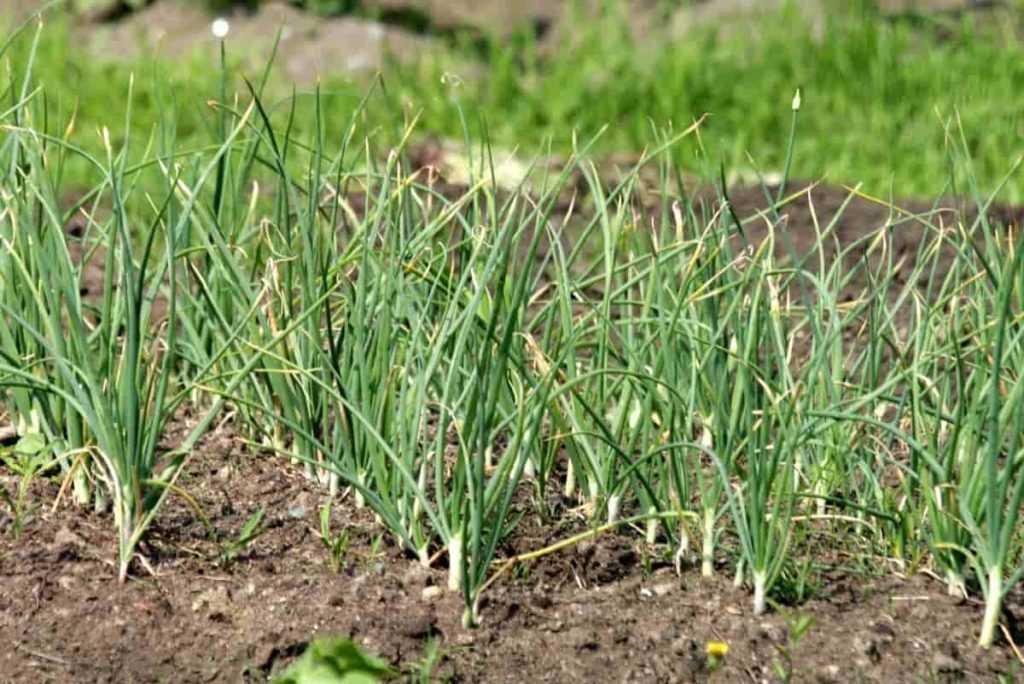
Winter garlic, like any other crop, requires certain nutrients to grow and develop properly. However, if these nutrients are lacking in the soil, it can lead to nutrient deficiencies in the plants and ultimately affect the harvest. Here are some common nutrient deficiencies in winter garlic and how to address them:
1. Nitrogen deficiency
Nitrogen is a vital nutrient for plant growth, and a deficiency in winter garlic can result in stunted growth and yellowing leaves. To address nitrogen deficiency, apply a balanced nitrogen-rich fertilizer according to the recommended dosage. This will help promote healthy leaf development and overall plant growth.
2. Phosphorus deficiency
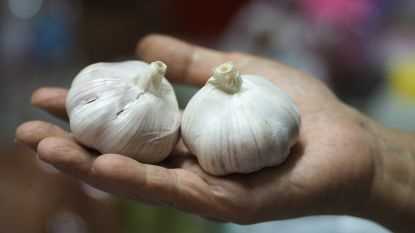
Phosphorus deficiency can lead to poor root development and reduced plant vigor in winter garlic. To address this deficiency, apply a phosphorus-rich fertilizer, such as bone meal or rock phosphate, to the soil. This will help improve root growth and enhance the plant’s ability to absorb other nutrients.
3. Potassium deficiency
Potassium is essential for winter garlic’s overall health and disease resistance. A deficiency in potassium can result in weak plants and increased susceptibility to pests and diseases. To address this deficiency, apply a potassium-rich fertilizer, such as potash, to the soil before planting or as a side dressing during the growing season.
4. Calcium deficiency
Calcium deficiency in winter garlic can lead to blossom end rot and weakened cell walls, making plants more susceptible to infections and diseases. To address calcium deficiency, apply a calcium-rich fertilizer, such as gypsum or calcium nitrate, to the soil. Additionally, maintaining proper soil pH and avoiding excessive use of acidic fertilizers can help prevent calcium deficiency.
5. Magnesium deficiency
Magnesium deficiency can cause yellowing or reddening of winter garlic leaves, as well as reduced chlorophyll production. To address this deficiency, apply a magnesium-rich fertilizer, such as Epsom salt, to the soil. This will help enhance chlorophyll production and improve overall plant health.
6. Micronutrient deficiencies
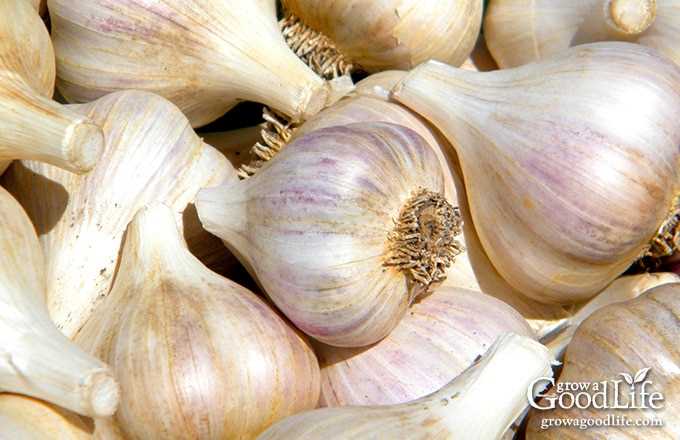
Winter garlic may also suffer from micronutrient deficiencies, such as iron, zinc, or manganese deficiencies. These deficiencies can manifest as yellowing leaves, stunted growth, or poor fruit development. To address micronutrient deficiencies, apply a balanced micronutrient fertilizer or foliar spray specifically formulated for garlic. Regular soil testing can also help identify and address any micronutrient deficiencies.
Remember, proper soil preparation, including regular soil testing and the appropriate application of fertilizers, is essential in preventing nutrient deficiencies in winter garlic. By addressing these deficiencies, you can ensure a successful harvest and healthy garlic crops.
Organic fertilisers for winter garlic: alternatives to chemical products
Using organic fertilisers is a great way to nourish your winter garlic crop while avoiding the use of harmful chemical products. Not only are organic fertilisers better for the environment, but they also provide nutrients to the soil in a slow-release manner, promoting long-term soil health.
1. Compost
Compost is a natural and nutrient-rich organic fertiliser that can be easily made at home. It is made by decomposing organic matter such as kitchen scraps, yard waste, and fallen leaves. Once the organic matter has broken down, it transforms into nutrient-rich compost that can be added to the soil to enrich its fertility.
2. Manure
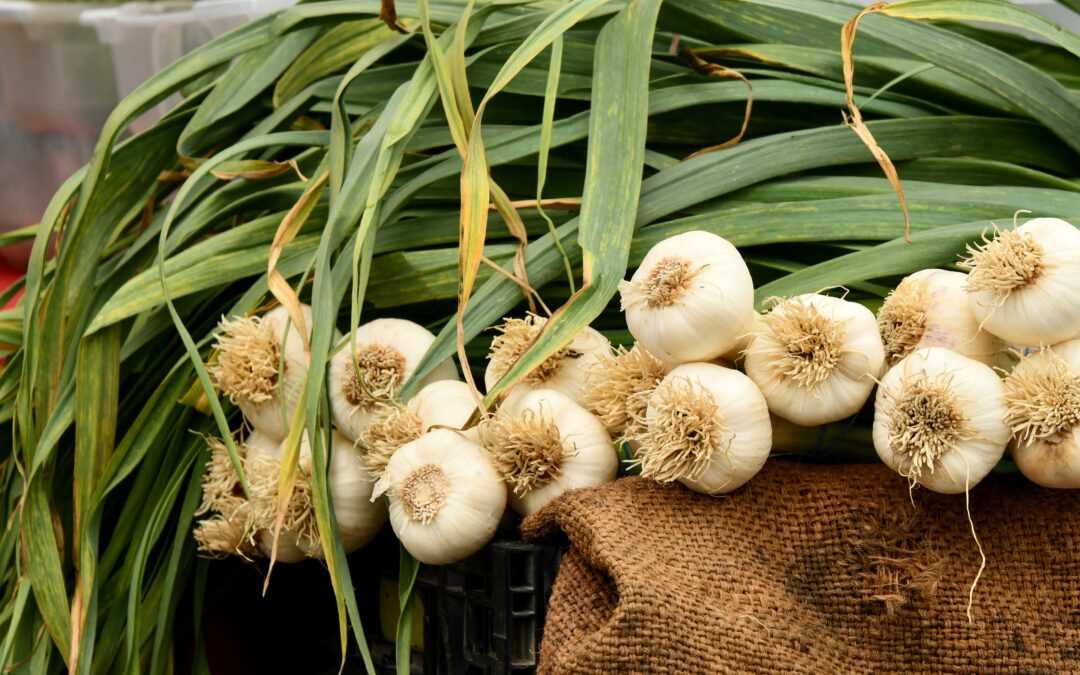
Animal manure, such as cow, horse, or chicken manure, is another excellent organic fertiliser option. Manure contains a variety of essential nutrients that are beneficial for garlic growth, including nitrogen, phosphorus, and potassium. However, it’s important to ensure that the manure has been well-aged or composted to avoid introducing any harmful pathogens to the soil.
3. Bone meal
Bone meal is a natural fertiliser derived from ground-up animal bones. It is an excellent source of phosphorus, which is essential for root development in garlic plants. Bone meal can be sprinkled around the base of the garlic plants before planting or side-dressed during the growing season.
4. Fish emulsion
Fish emulsion is a liquid organic fertiliser made from processed fish. It is high in nitrogen and other essential nutrients, making it a great choice for promoting healthy leafy growth in winter garlic. Fish emulsion can be diluted with water and applied to the soil or sprayed directly on the plants.
5. Seaweed extract
Seaweed extract is a natural organic fertiliser made from seaweed. It is an excellent source of trace elements, growth hormones, and other beneficial compounds that can enhance plant growth and productivity. Seaweed extract can be applied as a foliar spray or added to the soil as a drench.
When using organic fertilisers, it’s important to follow the recommended application rates and timings to avoid over-fertilising or under-fertilising your winter garlic. Additionally, regular soil testing can help ensure that the soil has adequate nutrient levels for optimal plant growth.
By choosing organic fertilisers, you can nourish your winter garlic crop in an eco-friendly way while still achieving a successful harvest. Experiment with different organic fertilisers to find the ones that work best for your garlic plants and soil conditions.
Regular soil testing for optimal fertilisation of winter garlic
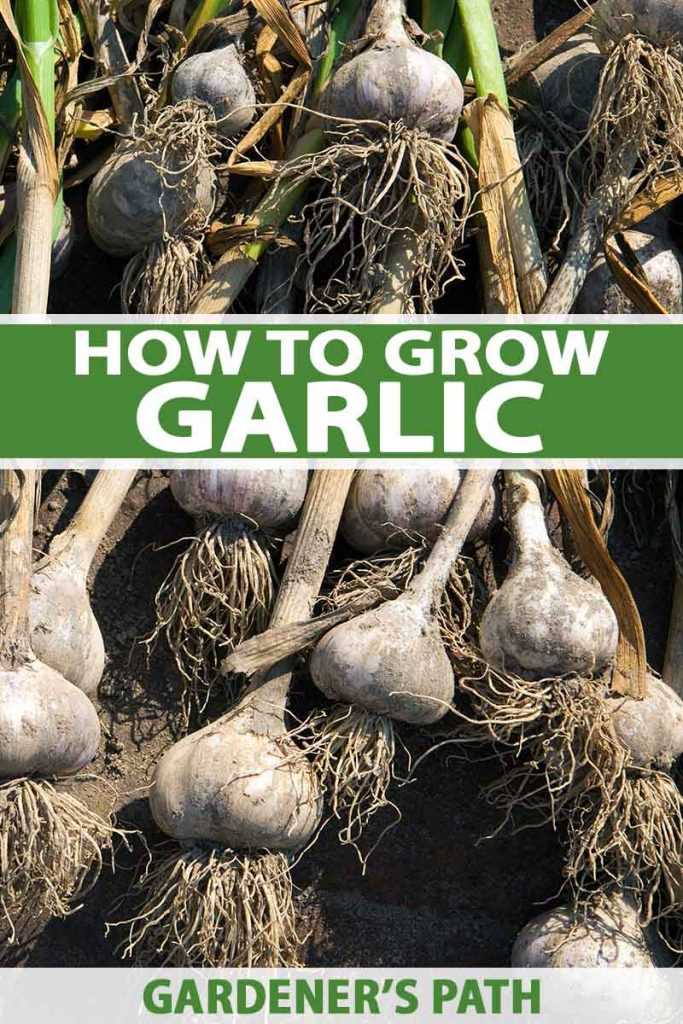
Regular soil testing is an essential step in ensuring the optimal fertilisation of your winter garlic crop. By understanding the nutrient content and pH levels of your soil, you can make informed decisions about which fertilisers to use and in what quantities.
Why is soil testing important?
Soil testing provides valuable information about the current state of your soil and its nutrient levels. This information is crucial because it allows you to tailor your fertilisation approach to meet the specific needs of your winter garlic crop. Without regular soil testing, you may be over-fertilising or under-fertilising your plants, which can lead to nutrient deficiencies or excessive nutrient buildup in the soil.
How often should you test your soil?
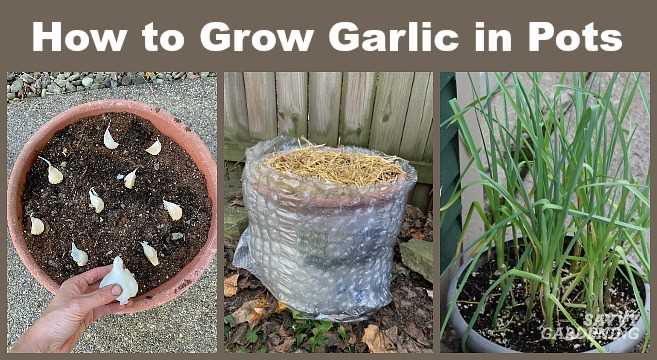
It is recommended to test your soil at least once a year, preferably in the early spring before planting your winter garlic. This will give you ample time to apply any necessary fertilisers and make appropriate adjustments to your soil before the growing season begins. If you notice any issues with your crop during the growing season, it may also be helpful to perform additional soil tests to identify and address any nutrient deficiencies or imbalances.
What should you test for?
When conducting a soil test for winter garlic, there are several key factors to consider:
- pH level: Garlic prefers a slightly acidic soil with a pH range of 6.0 to 7.0. Testing the pH level will help you determine if you need to adjust it to create optimal growing conditions for your crop.
- Macronutrients: Testing for macronutrients such as nitrogen, phosphorus, and potassium will give you insight into the overall nutrient content of your soil. These macronutrients are essential for healthy plant growth and development.
- Micronutrients: Micronutrients, such as iron, zinc, and manganese, are also important for proper plant growth. Testing for micronutrients will help identify any deficiencies that need to be addressed.
- Organic matter: Soil organic matter content plays a significant role in soil fertility and water-holding capacity. Testing for organic matter will help you determine if you need to add organic amendments to improve soil structure and nutrient availability.
Interpreting soil test results
Once you receive your soil test results, it’s essential to understand how to interpret them. Many soil testing labs provide recommendations based on your specific crop and soil conditions. These recommendations will guide you in determining the appropriate type and quantity of fertilisers to apply to your winter garlic crop. It’s important to follow these recommendations closely to avoid over- or under-fertilising your plants.
Conclusion
Regular soil testing is a critical component of successfully fertilising your winter garlic crop. By understanding the nutrient content and pH levels of your soil, you can make informed decisions to optimise the growth and development of your garlic plants. Take the time to test your soil annually and adjust your fertilisation approach as needed to ensure a successful harvest.
“Question-Answer”
When is the best time to fertilise winter garlic?
The best time to fertilise winter garlic is in early spring, just as the plants are starting to grow. This allows the garlic to take in the nutrients and use them for healthy growth.
What type of fertilizer should I use for winter garlic?
It is best to use a balanced, granular fertilizer that is high in nitrogen. This will provide the necessary nutrients for healthy leaf growth and bulb development. You can find fertilizers specifically formulated for garlic at your local garden center.
How much fertilizer should I use for winter garlic?
The amount of fertilizer to use will depend on the size of your garlic patch. As a general rule, you should use about 1-2 pounds of fertilizer per 100 square feet of garlic. It is important not to over-fertilise, as this can lead to excess leaf growth and weak bulbs.
Can I use organic fertilizer for winter garlic?
Yes, you can use organic fertilizer for winter garlic. Organic fertilizers, such as compost or well-rotted manure, can provide a slow release of nutrients and improve soil health. Just make sure to use organic fertilizers that are specifically formulated for vegetable crops.
Should I fertilise winter garlic more than once?
It is generally not necessary to fertilise winter garlic more than once. Applying a single application of fertilizer in early spring should provide enough nutrients for the garlic plants to grow and develop. However, if you notice signs of nutrient deficiency, such as yellowing leaves, you may need to apply a second round of fertilizer.
Can I use liquid fertilizer for winter garlic?
While liquid fertilizers can be used for winter garlic, they are not as effective as granular fertilizers. Liquid fertilizers tend to provide a quick burst of nutrients, but they can also leach away more easily and may not provide the sustained nutrition that winter garlic needs. It is best to stick with granular fertilizers for winter garlic.
What other care tips are important for a successful harvest of winter garlic?
In addition to fertilising, there are a few other care tips that can help ensure a successful harvest of winter garlic. These include keeping the soil moist but not waterlogged, removing any weeds that compete for nutrients, and monitoring for pests and diseases. It is also important to harvest the garlic at the right time, when the leaves have started to yellow and dry out, but before they completely die back.







